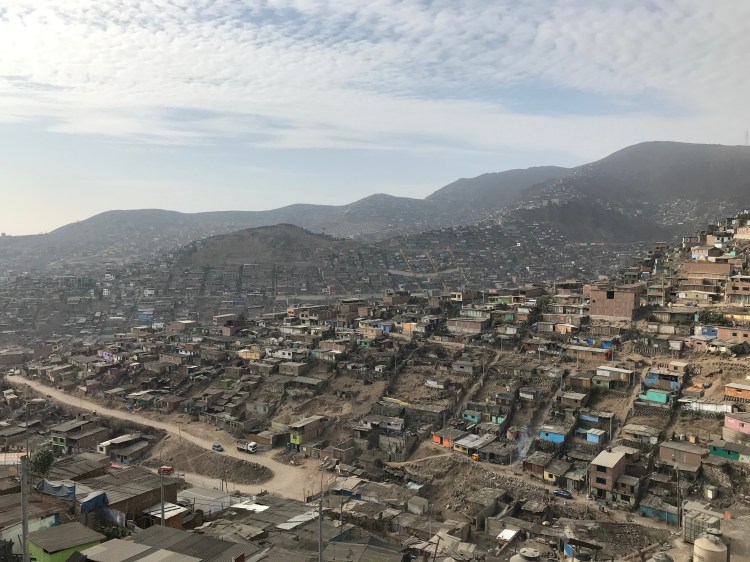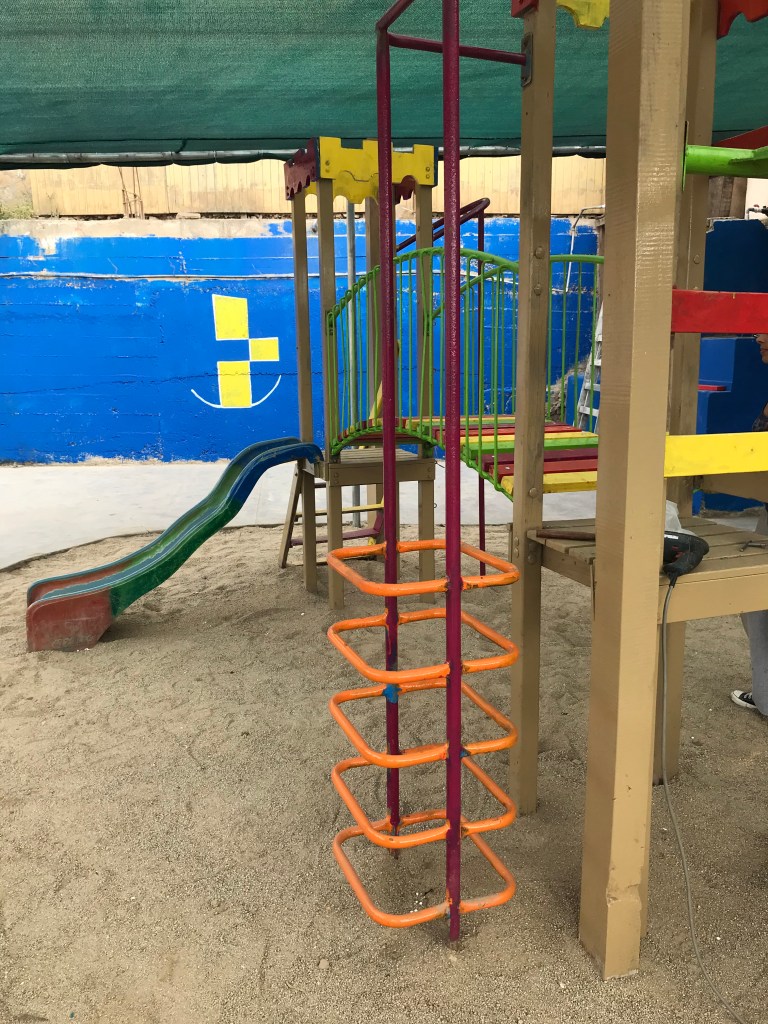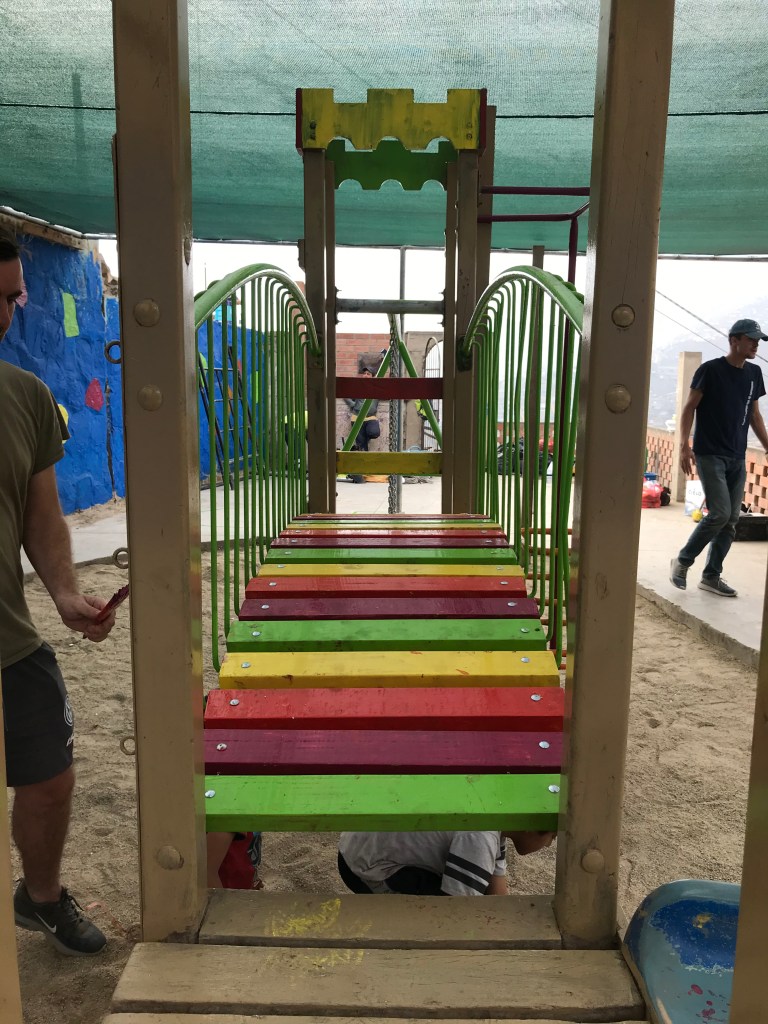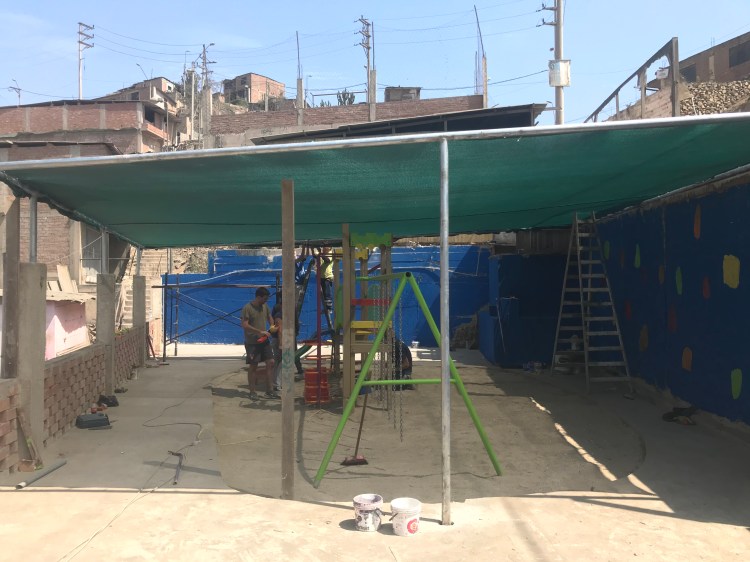Placemaking
The collective re-imagination and reinvention of public spaces as the heart of every community; the capitalization of a local community’s assets, inspiration, and potential resulting in the creation of quality public spaces which contribute to the health, happiness, and wellbeing of the community and its individuals.
This definition of placemaking was coined in the early 90’s by the non-profit, Project for Public Spaces. Since then, this term has become an essential part of the education, work process, and vocabulary of urban designers, planners, and architects, making its way into almost every revolutionary and successful urban development project of every scale of the 21st century.




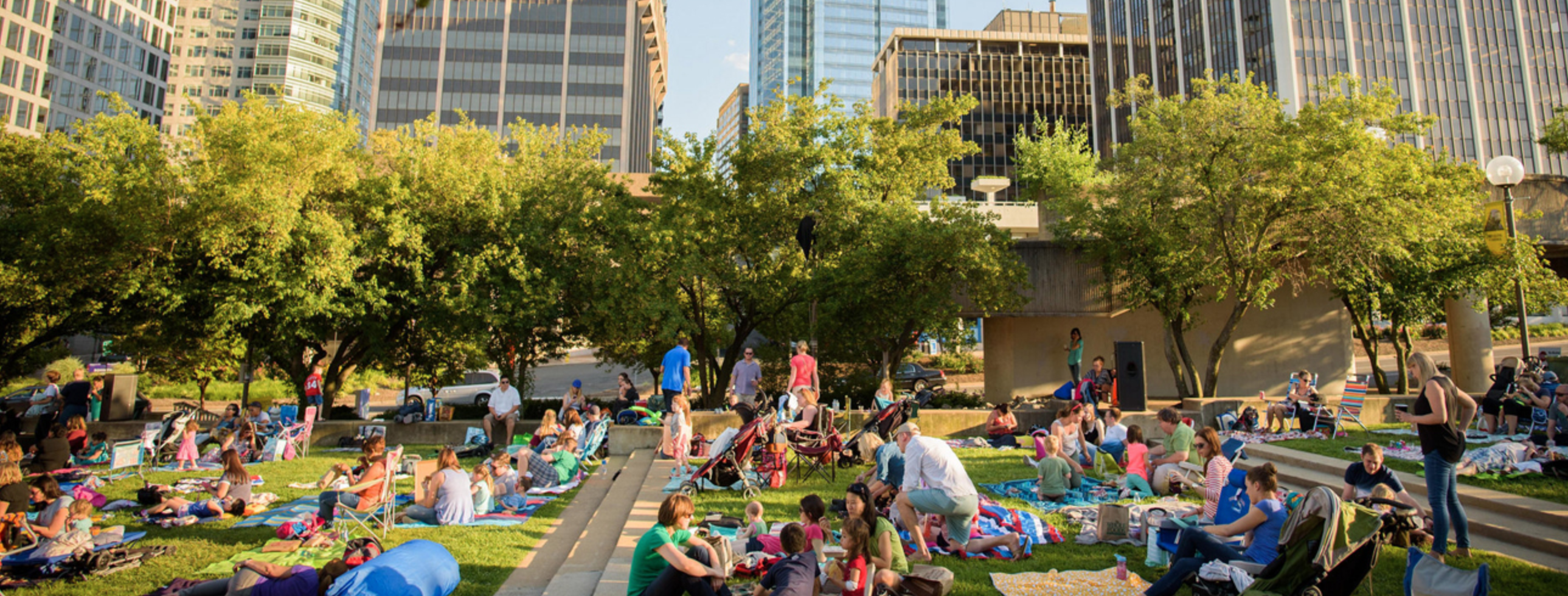


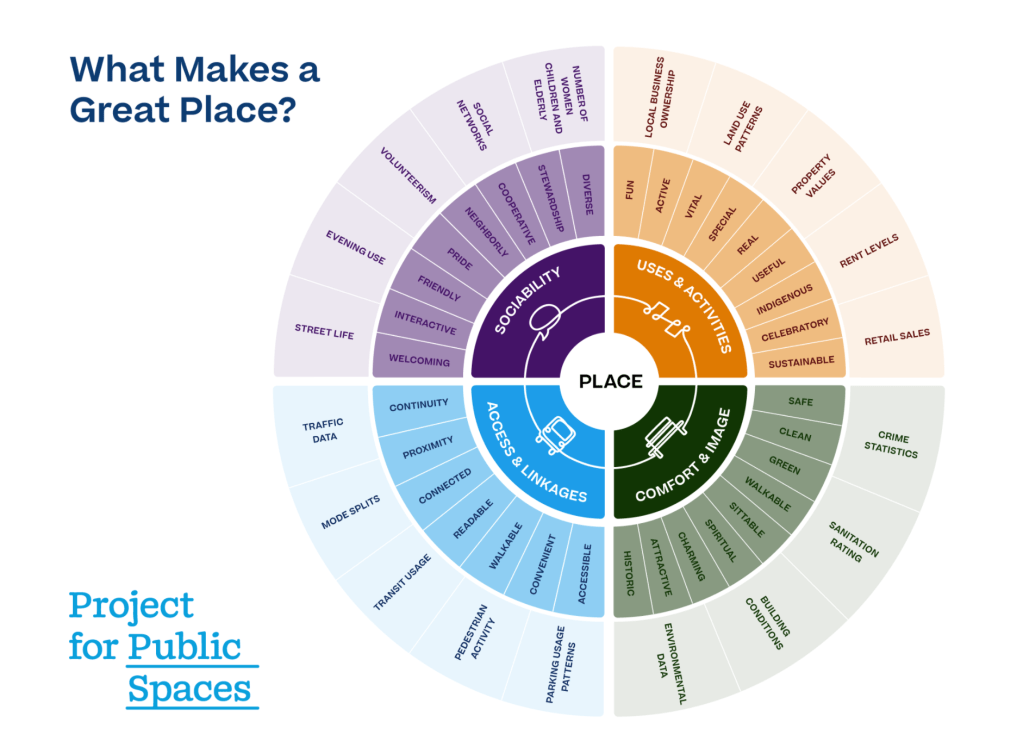
Source: Project for Public Spaces
While working in Peru I was tasked with the renovation of a playground in a part of Lima’s San Juan de Miraflores district called Pamplona. Pamplona, shown in this post’s featured image, is one of Lima’s poorest asentamientos humanos (the politically correct name for slums in Lima). According to San Juan de Miraflores’ development plan for 2021, Pamplona currently encompasses 135,000 inhabitants. Green spaces are few and far between not only because of a lack of planning nor because Lima sits in a desert, but also because residents in these areas will pay almost up to 10x what residents in Lima’s most affluent areas will pay for water. Water is a luxury that cannot be afforded.
Over the five months working there, many of Pamplona’s residents also mentioned they were scared to be in public spaces. Past and present experiences as well as word-of-mouth harrowing tales of drug use and violent crime’s presence in these areas has created a local culture of fear of these spaces, discouraging the use and therefore the creation and maintenance of green space. A lack of municipal funds as well as a cultural lack of pride in public space has lead to the drastic abuse and abandonment of these areas over the years.
When tasked to renovate the playground I was presented with these challenges as well as a playground in complete disrepair (see photographs below for details). The photograph below shows the state of the playground and is also a good representation of what many public spaces in Lima’s poorest asentamientos humanos turn into.
The aluminum roofing had caved in and rusted. Nails stuck out from the wood and the ground which was also littered with broken glass, sharp rocks, and garbage. One of the slides had huge holes in it from rocks people had thrown onto the aluminum roofing, which had collapsed after years of abuse and the weight of the rocks. The bridge connecting the two towers had also lost most of its wood creating an unstable structure. The remaining iron and wooden railings and posts were so splintered and rusted that just putting your hand on it cut you in an instant. Lastly, it was very lifeless with little color and no inviting features.

My goal was to create an inviting place, not just for aesthetics but to instill a pride within the community for their playground. This would make it a place, meaning it would be a location where the community could gather for festivities and daily recreation creating what urbanists deme as the theory of ‘Eyes on the Street’. This was of utter importance to the success of the project because it would encourage a community safety net that would become intrinsic to the space through its daily use. Retrofitting the area with durable materials was also very important to make repairs as easy and infrequent as possible.
In the end we:
- Replaced the roofing and wooden supports with welded metal supports and netted roofing. The flexible net would be much more durable than the aluminum foil because of its elasticity. It’s secure fastening to the welded metal supports and natural rock wall would also allow for people to climb out onto the netting to take off rocks weighing down the structure. Once the netting was up, the difference in temperature underneath it from sunnier areas was mind-boggling. The net’s porousness also allowed sunlight onto the playground below, preventing darker, ominous spaces that could lend themselves to shadier activities.
- The broken slide and rusted metal bars were taken out.
- The decrepit swing set was replaced and fortified with more welded metal structures.
- Salvageable iron and wood were sanded while the rest, es pecially around the bridge, were replaced.
- The walls were painted to create an inviting place
- And the floor was thoroughly cleaned and replaced with fresh sand.
Before & After
Placemaking is of incredible importance to the success of a city. The aesthetic improvement of a space not only increases quality of life by creating an inviting space, it also creates a local civic pride because of the space’s increased use and exposure to the community. This use contributes to the space becoming an essential part of the community and something near and dear to the hearts of those who use it. This in turn invites more and more people to use it, increasing pride, and increasing the safety of the space.
Understanding the importance of placemaking I believe it only just that every human in society should enjoy its benefits. Even if not designed and executed by a top design firm, I believe this endeavor shows the simplicity in creating a place which is not only beautiful but physically durable and empowering for its users. Obviously I hope this new playground increases the quality of life of the neighbors in the area. However, on another note, I hope it fosters a local conversation and action on the continued change of public spaces in Pamplona and impoverished urban areas around the world.
Other Image Sources:
Marshalls, Colorado Real Estate Journal, Model Media, Placemaking CHA, The Trust for Public Land, Rosslyn, You Are Here,


